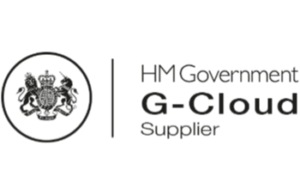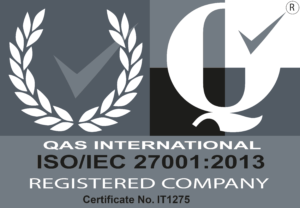As an Amazon Web Services (AWS) Advanced Consulting and Solution Provider partner, CirrusHQ works with a range of organisations in both the public and private sectors. Their activities may demand very different approaches to the use of Cloud, but the need for an optimised solution is common to all our clients.
Whatever you are working on in the cloud, from a single server right up to a multi-region, multi-account deployment, everything in the cloud should be monitored carefully to ensure it is delivering the outcome you expect, whilst optimising your monthly AWS spend.
In this series of blogs we have focussed on the main benefits delivered for clients following a well-architected review (WAR), starting with cost-optimisation and the need to develop a constant process of refinement and improvement over a workload’s life-cycle.
In the second we detailed the benefits for security best practice likely to be attained following a WAR, with a significant improvement in Cloud security high on the list of achievements for almost all our clients.
In this blog, the third in the series, we review the actions typically required to improve the governance of your AWS Cloud, so you have a clearer picture of what resources you are using and why. This aspect of the WAR and the remedial actions, form part of the cost optimisation pillar.
Remediations are not all related to cost, but all ensure all architectural best practices are followed, across five pillars defined by AWS, which are (please note, a sixth pillar is to be added in 2022 for Sustainability):
- Operational Excellence
- Security
- Reliability
- Performance Efficiency
- Cost Optimisation
The cost-optimisation pillar seeks to address a number of potential issues and one of these is helping clients understand how they can readily govern usage in their AWS Cloud.
Governing usage makes organisational and economic sense
Once the initial excitement of understanding just what is possible in the AWS Cloud has subsided, it is critical all of your AWS usage is tracked and you are able to define where it is all coming from. Linked to this aspect of the cost-optimisation pillar, is knowing where you are incurring cost and tracking resource usage over time, to ensure you aren’t paying for resources you do not use or need.
It sounds simple, but the ease with which you can scale and exploit new resources to achieve innovation and new outcomes, can lead to your Cloud becoming flabby and unstructured; it works well, but can cost you more than it needs to.
Problems can arise following the initial setup of your Cloud. Typically in our experience, costs do not tend to be very well segregated, and understanding who within your organisation owns the specific costs, can be challenging.
Additionally, costs that are quite low initially can gradually increase the longer you use the cloud, if you don’t keep an eye on them. Backups are a great example of this, we would all like to have backups available right back to day 1 when we created our services, but there is a balance to be achieved between the cost of storing backups and how far back they should go.
Concentrating on the outcomes and not accurately tracking project costs is another common problem we identify during a WAR. If unresolved, it can lead to unused resources being left running, which wastes money for no reason, when it can be easily addressed.
Deep dive to understand where your costs are coming from
Having looked at the issue of governance, understanding what resources you are using and paying for, we’ll now look at the remediation steps you can take to ensure you only pay for what you use, when you use it, without impacting the performance of your AWS Cloud.
And of course, you can do all this yourself. Or you can work with a trusted AWS partner, such as CirrusHQ, whose certified engineers have many years experience of the AWS Well-Architected Framework, delivering reviews and helping obtain AWS credits to support related remediation work.
Unique policies – if you haven’t already, you will need to develop policies that define how resources are managed by your organisation, covering the cost aspects of resources and workloads, including creation, modification and decommission over the resource lifetime.
Goals and targets – it is important to implement both cost and usage goals for your workload, which will provide direction to your organisation, whilst setting targets will provide measurable outcomes for your workloads.
Account structure – introduce a structure of accounts that maps to your way of working, to assist with managing and allocating costs to the right groups or departments. Consider developing a tagging strategy to allow for accurate cost allocation and to prevent users from creating cost-intensive resources.
Control access – by assigning groups and roles that reflect your policies, you can control who is able to create, modify, or decommission instances and resources across your organisation. Making people accountable through development, test and production groups for example, will help you maintain stricter control throughout.
Project lifecycle – introducing methods to track, measure and audit the lifecycle of projects, teams and environments, you will avoid using and paying for unnecessary resources. Monitoring everything on a daily basis will stop runaway costs based on new usage and tracking resources that are no longer in use will stop the waste.
Cost controls – controls that reflect your organisational policies and defined groups or roles, will ensure that costs are only incurred in line with the defined needs of your organisation; removing random access gives you cost control through allocations to different teams.
Are you ready for WAR?
By now you should know why a WAR makes sense, given the likely remediations we will undoubtedly suggest to help you optimise and control your monthly spend. But here are a few specific benefits when you take steps to answer the question; ‘How do I govern usage?’
The typical benefits delivered following successful remediation include:
- Keeping costs under control and optimising spend on AWS
- Tracking who is using resources and determine if the resources are really needed
- Allocating costs to specific departments and groups by need
- Preventing waste paying for resources you no longer need
- Identify areas for cost improvements across your organisation
Having read this blog, you should now understand that AWS, through the WAR best practice, can ensure your Cloud is not only fully optimised, but that it costs you as little as possible whilst delivering the required outcomes.
Working with an AWS Advanced Consulting and Solution Provider partner, such as CirrusHQ, you can govern your usage more effectively, optimise your AWS Cloud and reduce your monthly spend. As an AWS Well-Architected Framework Certified Partner, we have identified over 2,000+ Well-Architected Review High Risk Issues and conducted over 2,400 hours of Reviews. This makes us ideally experienced and qualified to carry out the Well-Architected Review.
And remember, following a review, we will develop an action plan with you, to carry out the recommended remediations. Once this plan is agreed, we will also assist you in applying for $5000 of service credits from AWS to offset against the costs of CirrusHQ carrying out the improvement or remediation work. When you’re ready, we’re ready.
Optimise your Cloud with an in-depth review of your infrastructure to accelerate your Cloud journey – Contact us.











